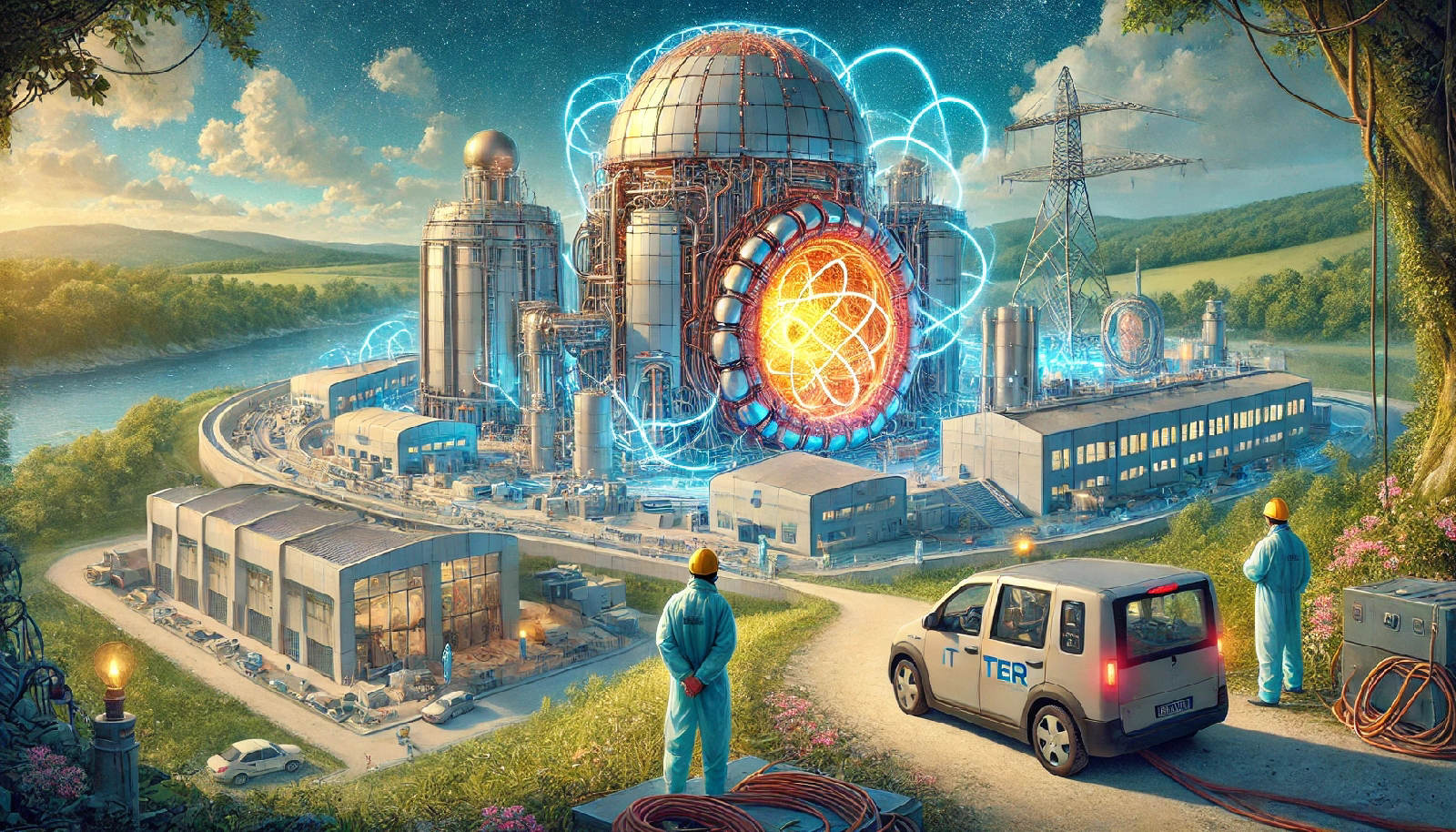Hi there, dreamers and deep thinkers! Today, let’s dive into something that feels like a plot straight out of a sci-fi novel—but it’s happening right here on Earth. Nestled in the scenic countryside of southern France, the ITER project (short for International Thermonuclear Experimental Reactor) is nothing short of a scientific marvel. This isn’t just about technology; it’s about the future of energy, humanity, and, dare I say, survival.
Stay curious, because this story will blow your mind.
What Is ITER, and Why Should You Care?
ITER is humanity’s most ambitious attempt to harness the power of the stars. Its goal? To make nuclear fusion—a clean, limitless source of energy—a reality on Earth. Unlike nuclear fission, which powers today’s reactors but leaves behind hazardous waste, fusion is the process that fuels the sun. It’s cleaner, safer, and has the potential to revolutionize energy forever.
Why does this matter? Because the world is desperate for sustainable energy solutions. Fossil fuels are running out, and renewable energy, while promising, can’t yet meet global demand. Fusion could be the holy grail—an answer to our energy crisis.
The Science Behind the Magic
Let’s break this down. Fusion occurs when two light atomic nuclei collide and fuse into a heavier nucleus, releasing an enormous amount of energy. The kicker? It requires extreme conditions—temperatures of over 150 million degrees Celsius, hotter than the core of the sun.
This is where ITER comes in. Inside its massive tokamak reactor, scientists aim to recreate these conditions. The tokamak uses powerful magnets to contain and control plasma, the superheated state of matter where fusion happens.
ITER’s Global Collaboration
One of ITER’s most fascinating aspects is how it unites the world. It’s a collaboration between 35 countries, including heavyweights like the United States, China, India, Russia, Japan, South Korea, and the European Union. Think of it as the scientific equivalent of the Olympics—but with a much higher stakes game.
Each member country contributes resources, expertise, and funding. This isn’t just a French project; it’s a global mission. And while geopolitics often divides us, ITER is a reminder of what we can achieve when we work together.
The Engineering Marvel
Building ITER is a feat of engineering that boggles the mind. The reactor itself is a 23,000-tonne behemoth, with components shipped from around the globe. Every piece must fit perfectly, like an intercontinental jigsaw puzzle.
The site spans over 180 hectares, and the reactor is housed in a structure taller than the Arc de Triomphe. It’s not just big—it’s precise. The magnetic coils, for example, are so finely tuned that a single misalignment could derail the entire experiment.
The Challenges of Fusion
Fusion sounds like a dream, but it’s an incredibly tough nut to crack. The biggest hurdle? Achieving a net energy gain. This means generating more energy from the reaction than it takes to start it—a milestone ITER aims to reach.
Another challenge is maintaining the plasma. It’s notoriously unstable, like trying to hold jelly in your hands while it’s on fire. Even with cutting-edge tech, scientists face constant setbacks and surprises.
The Timeline: When Will It Work?
Here’s the million-dollar question: when will ITER produce usable energy? The project’s first plasma experiments are slated for 2025. These initial tests won’t generate power but will pave the way for full fusion experiments in the 2030s.
By 2050, scientists hope ITER will demonstrate fusion’s commercial viability. Yes, it’s a long timeline. But when you’re dealing with science this complex, patience isn’t just a virtue—it’s a necessity.
Why Fusion Is Worth the Wait
Imagine a world powered by clean, limitless energy. No more oil spills, smog-filled cities, or geopolitical fights over fossil fuels. Fusion could drastically reduce carbon emissions and mitigate climate change.
It’s also incredibly efficient. Just one gram of fusion fuel (a mix of hydrogen isotopes) can produce as much energy as eight tonnes of oil. And the fuel sources—deuterium and tritium—are abundant, found in seawater and lithium.
The Critics and the Cost
Not everyone is sold on ITER. Critics point to its hefty price tag—over $25 billion and counting. They argue that the money could be better spent on proven renewable technologies like solar and wind.
Others worry about the long timeline. Can we afford to wait decades for fusion when the climate crisis demands urgent action? These are valid concerns, but proponents counter that ITER is a long-term investment in humanity’s survival.
ITER and the Bigger Picture
ITER isn’t just about energy—it’s about pushing the boundaries of human knowledge. It’s a testament to what we can achieve when we dream big and take risks. Even if ITER doesn’t deliver on all its promises, the technologies and insights gained will benefit science for generations.
From medicine to space exploration, fusion research has countless spin-offs. ITER reminds us that progress often starts with daring experiments that seem impossible at first.
A Future Worth Believing In
So, where does this leave us? ITER is a gamble, no doubt about it. But it’s a gamble worth taking. In a world grappling with climate change, energy scarcity, and political divisions, projects like ITER offer a glimmer of hope.
It’s not just about science—it’s about the human spirit. ITER is a bold declaration that we’re willing to invest in a better future, even if it takes decades to get there.
Final Thoughts
Fusion might feel like a far-off dream, but dreams have a funny way of becoming reality. As ITER moves closer to its first plasma, it’s an exciting time to be alive. Whether it succeeds or not, it’s already reshaping how we think about energy, collaboration, and the possibilities of science.
Stay curious, and let’s keep watching the stars—and ITER—for answers.




